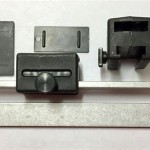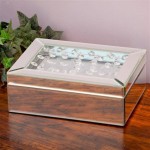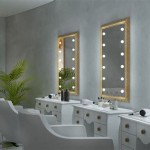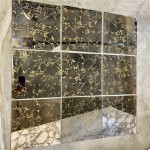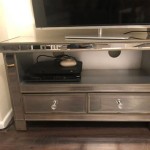Convex Mirrors Produce Only Virtual Images
Convex mirrors, also known as diverging mirrors, are spherical mirrors where the reflecting surface bulges outward. They are commonly found in applications ranging from rearview mirrors in vehicles to security systems and store surveillance. One defining characteristic of convex mirrors is their ability to produce only virtual images, which are always upright and smaller than the actual object. This article delves into the reasons behind this phenomenon, exploring the properties of convex mirrors and their image formation.
Understanding Convex Mirrors and Image Formation
Convex mirrors are distinguished by their outward curvature, which causes parallel rays of light to diverge after reflection. This divergence is a key factor in understanding the formation of virtual images. When an object is placed in front of a convex mirror, the light rays emanating from the object strike its surface. The diverging nature of the mirror causes the rays to spread out, as if they originated from a point behind the mirror. This apparent point of origin is where the virtual image is formed.
Key Properties of Virtual Images
Virtual images formed by convex mirrors exhibit several distinct characteristics:
1.
Upright:
Virtual images in convex mirrors are always upright, meaning they are not inverted compared to the object. This is in contrast to concave mirrors, which can produce both real and virtual images, including inverted ones.2.
Smaller than the Object:
Virtual images formed by convex mirrors are always smaller in size than the actual object. This reduction in size is a consequence of the diverging nature of the mirror, which spreads the light rays, leading to a diminished image.3.
Located Behind the Mirror:
Virtual images are not formed on a screen or a surface but appear to exist behind the mirror. This is because the reflected light rays only seem to originate from a point behind the mirror, making it impossible to project the image onto a surface.Ray Diagrams and Image Formation
Ray diagrams offer a visual representation of how light interacts with convex mirrors and how virtual images are formed. To construct a ray diagram for a convex mirror, three key rays are drawn:
1.
Parallel Ray:
A ray of light parallel to the principal axis of the mirror is reflected such that it appears to originate from the focal point (F) behind the mirror. This ray is always reflected through F.2.
Center Ray:
A ray passing through the center of curvature (C) of the mirror strikes the reflecting surface perpendicularly. This ray is reflected back along its original path.3.
Focal Ray:
A ray passing through the focal point (F) is reflected parallel to the principal axis of the mirror.By drawing these three rays and extending their reflected paths, they intersect at a point behind the mirror. This point of intersection represents the location of the virtual image.
Applications of Convex Mirrors
The properties of virtual images produced by convex mirrors make them valuable in various applications:
1.
Rearview Mirrors:
Convex mirrors are used as rearview mirrors in vehicles because they provide a wider field of view, displaying a larger portion of the area behind the car. This wider view helps drivers to see traffic approaching from the sides, improving road safety.2.
Security Mirrors:
Convex mirrors are commonly employed in security systems, particularly in stores and public areas. Their wide viewing angle allows security personnel to monitor a wider area and detect potential threats or suspicious activities.3.
Store Surveillance:
Convex mirrors are also used in stores to enhance surveillance and deter shoplifting. These mirrors provide a wide view of the store, making it difficult for customers to conceal their actions.4.
Traffic Mirrors:
Convex mirrors are installed at road junctions and blind corners to improve visibility for drivers, reducing the risk of accidents. They help drivers to see oncoming traffic from blind spots.The applications of convex mirrors extend beyond these examples, highlighting their versatile nature in enhancing visibility and safety.
In A Convex Mirror Why Is Virtual Image Formed Quora
Can A Convex Mirror Form Magnified Image Quora

Question Recalling Whether The Image Produced By A Convex Mirror Can Be Inverted Nagwa
Can A Convex Mirror Produce Real Image
Solved Convex Mirror Produce A Only Virtual Images B Chegg Com

Virtual Image Wikipedia
Under What Condition Do Converging Lines Form A Virtual Image Quora
Solved Convex Mirrors Produce Only Virtual Images Real Chegg Com
Is It Possible For A Convex Mirror To Produce Real Image When The Object Virtual Quora

Convex Mirror Uses Of Definition Equation

